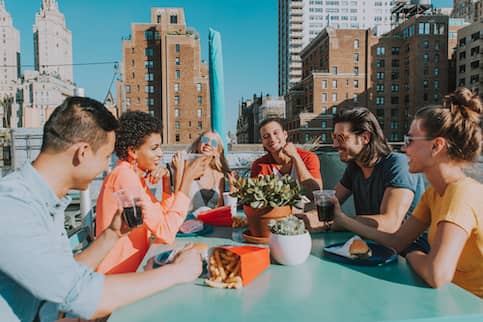Understanding the value of a purchase before making a transaction can be extremely beneficial, which is especially true with a mortgage. That’s why many people will pay to get an appraisal, which allows them to know the value of the property they’re looking to buy or sell. That’s also why lenders almost always require that a buyer order an appraisal on a house they’re looking to purchase.
However, an appraisal isn’t always necessary for borrowers to obtain a mortgage refinance. When refinancing, homeowners can sometimes skip the appraisal. A mortgage lender may waive an appraisal, depending on the type of loan the borrower is seeking and the timing of a previous appraisal.
A no-appraisal refinance isn’t ideal for every scenario, though, so here’s a guide for when skipping the appraisal on a refinance can make sense.
Appraisal Overview
An appraisal is a licensed real estate appraiser’s professional opinion of your home’s value based on its condition and the current housing market. While home appraisals are necessary for calculating property taxes, lenders also use them as standards for mortgages and refinancing. As a result, borrowers receive home loans based on up-to-date appraisals.
Lenders often require appraisals for access to different loan products. However, appraisals aren’t always needed. For example, borrowers of some loan types can bypass the appraisal process.
In addition, cash transactions don’t necessitate an appraisal since a lender isn’t involved.
Do You Need An Appraisal To Refinance?
While appraisals are often necessary when refinancing, lenders can waive the refinance appraisal with specific loans. For example, a lender may waive an appraisal if the borrower has a Federal Housing Administration (FHA) loan, a Department of Veterans Affairs (VA) loan or a U.S. Department of Agriculture (USDA) loan. All of these loans are backed by an agency of the federal government.
Acquiring a mortgage refinance with a conventional loan – one not insured by the government but by a private lender – usually comes with an appraisal. However, lenders might waive the appraisal if the home was last appraised less than a year earlier. In most cases, waived appraisals help borrowers with government-sponsored loans and challenging financial circumstances.
What Is An Appraisal Waiver?
An appraisal waiver is permission from your lender to eliminate the appraisal during the refinancing process. Again, a borrower can sometimes get an appraisal waiver if they have a specific type of mortgage loan or their home had an appraisal performed less than a year ago.
Loans That Allow You To Refinance Without An Appraisal
There are several ways to get a no-appraisal refinance. Although most borrowers will need an appraisal for their mortgage refinance, the following loan types typically don’t need an appraisal.
See What You Qualify For
Buy A Home
Discover mortgage options that fit your unique financial needs.

Refinance
Refinance your mortgage to have more money for what matters.
Tap Into Equity
Use your home’s equity and unlock cash to achieve your goals.
FHA Streamline Refinance
Borrowers with an FHA loan can refinance their mortgage without an appraisal through an FHA Streamline Refinance. The refinance grants borrowers the following benefits:
- A reduced interest rate: A lower interest rate can cut your monthly payment and save you money over the years.
- An extended loan term: Refinancing can add a maximum of 12 years to your loan, dropping your monthly payment and providing financial relief.
- More affordable payments: A reduced interest rate or extended loan term can shrink your monthly payment, making your mortgage more affordable.
You can qualify for an FHA Streamline Refinance even if your home value has decreased. However, you’ll need to pay closing costs, and your mortgage insurance premium (MIP) will continue with the refinanced loan.
In addition, you’ll need to be current on your mortgage with at least 6 months of payments made to qualify for an FHA Streamline Refinance. You’ll also likely need a credit score of at least 580, and you may need to meet a certain debt-to-income ratio (DTI) requirement.
Finally, note that an FHA Streamline Refinance isn’t a cash-out refinance, meaning you can’t use it to turn equity into cash.
VA Streamline Refinance
A VA Streamline Refinance allows eligible active-duty military members, veterans, individuals who’ve served in the National Guard or Army Reserve, and surviving spouses to refinance a mortgage from the Department of Veterans Affairs (VA).
Refinancing your VA loan can lead to a lower interest rate and monthly payment. Borrowers will likely need a minimum credit score of 580 and a DTI that allows them to afford the mortgage payment. In addition, your lender can roll closing costs into the new loan if needed, although doing so will raise the loan balance.
The VA also provides cash-out refinance loans, allowing borrowers to turn their equity into cash. As a bonus, this refinance can lower the interest rate as well. As a result, both VA refinance options are interest-rate reduction refinances.
USDA Streamline Refinance
Borrowers with a (USDA) loan can use a USDA Streamline Refinance to lower their monthly payment, decrease their interest rate and/or modify their loan term. You don’t need an appraisal or inspection to qualify, and you won’t find strict credit or equity requirements.
As a borrower, you’ll need to satisfy the following conditions to qualify for a USDA Streamline Refinance:
- The loan has to be for your primary residence.
- This refinance type is only for USDA loans, not other mortgage types.
- You can only refinance a loan you’ve had for a year or more.
- You must show a satisfactory DTI and an adequate income for loan payments.
- Your last 6 months of payments must be on time.
Borrowers who get a USDA Streamline Refinance can roll closing costs into the new loan or pay them upon closing. Additionally, you’ll have to pay a guarantee fee, which is a fixed annual cost unique to USDA loans.
Lastly, the USDA Streamline Refinance isn’t a cash-out refinance, meaning borrowers can’t use their equity to receive money from the refinance.
USDA Streamline-Assist Refinance
A second option for borrowers with a USDA loan, a USDA Streamline-Assist Refinance is typically easier for borrowers to obtain. It has these stipulations:
- The home must be your primary residence.
- The refinance is for USDA loans only.
- Your present USDA loan must be at least a year old.
- Borrowers must make 12 consecutive payments on their present loan.
- To be valid, the refinance must reduce your monthly payment by at least $50.
Borrowers don’t need a specific credit score, income level, or DTI to qualify for a USDA Streamline-Assist Refinance. Plus, borrowers can skip an appraisal and an inspection altogether. Also, borrowers can add their closing costs to the new loan balance to avoid paying them upfront.
Automated Valuation Model (AVM)
Another alternative to an inspection is an automated valuation model (AVM). An AVM is a digital tool that estimates your home’s value by applying existing real estate data in a statistical model.
Unlike appraisers, who consider all current factors when giving a home appraisal, AVMs only use the information available in recording systems. As a result, AVMs aren’t helpful if they can’t access updated information.
However, AVMs can give accurate estimations if they have the information needed. While AVMs can help you determine your home’s value, lenders usually won’t accept an AVM in place of a necessary home appraisal.
The Pros And Cons Of A No-Appraisal Refinance
A no-appraisal refinance isn’t suitable in every scenario. Consider the following benefits and drawbacks if you’re contemplating a no-appraisal refinance.
No-Appraisal Refinance Pros
Here are a few advantages of refinancing without an appraisal:
- Borrowers save time by not scheduling an appointment and not waiting for a home appraiser to complete the appraisal.
- Borrowers skip a step in the refinancing process and receive their refinance more quickly.
- You’ll save money by not paying appraisal fees.
No-Appraisal Refinance Cons
Let’s take a look at a few disadvantages that come with a no-appraisal refinance:
- Without a recent appraisal, borrowers risk overpaying for their mortgage.
- Borrowers won’t get the benefit of a better interest rate, which may come with an appraisal.
- Because an appraisal could reveal that the homeowner has at least 20% equity in their house, eliminating the need for private mortgage insurance (PMI), homeowners could end up paying PMI unnecessarily. But with a conventional loan, the loan that requires PMI in some cases, an appraisal will likely be unavoidable.
Should You Refinance Without An Appraisal?
Refinancing without an appraisal is often a weighty financial decision. Therefore, borrowers should consider their financial situation when making this decision. That said, a refinance without an appraisal is perfectly reasonable in many circumstances.
Example Of Refinancing With And Without An Appraisal
Let’s say your property taxes recently increased more than expected and you decide to get an appraisal to ensure your municipality is basing taxes on accurate numbers. Now suppose that 8 months after this appraisal, you apply for a refinance to lower your interest rate.
In this instance, your lender likely won’t require an appraisal since you performed one less than a year ago for a property tax evaluation. As a result, you can go forward with the refinance using the appraisal you conducted shortly before applying.
However, sidestepping an appraisal isn’t always wise. Let’s consider the example above where you had an appraisal 8 months before applying for a refinance. Suppose your lender doesn’t require an appraisal to grant the refinance but you realize your local real estate market has soared for the past 8 months. Your home’s value has likely increased significantly since your last appraisal.
So, skipping the appraisal now would keep you from getting an accurate sense of your home value and cause you to have less equity in your home. During the refinancing process, you might decide to pay for another appraisal even though it isn’t mandatory, and you may find that your home has increased in value by $15,000.
The Bottom Line
A no-appraisal refinance can help you save money upfront on your new mortgage. Specifically, borrowers with an FHA loan, a VA loan or a USDA loan can take advantage of a no-appraisal refinance with ease.
However, borrowers with a conventional loan will likely have to pay for a home appraisal when refinancing unless they had an appraisal less than a year earlier. That said, getting an updated appraisal is helpful for understanding your home’s value and knowing how much equity you have in your home.
Find A Mortgage Today and Lock In Your Rate!
Get matched with a lender that will work for your financial situation.

Ashley Kilroy
Ashley Kilroy is an experienced financial writer who writes for solo entrepreneurs as well as for Fortune 500 companies. She is a finance graduate of the University of Cincinnati. When Ashley isn’t helping people understand their finances, you may find her cage-diving with great whites or on safari in South Africa.












